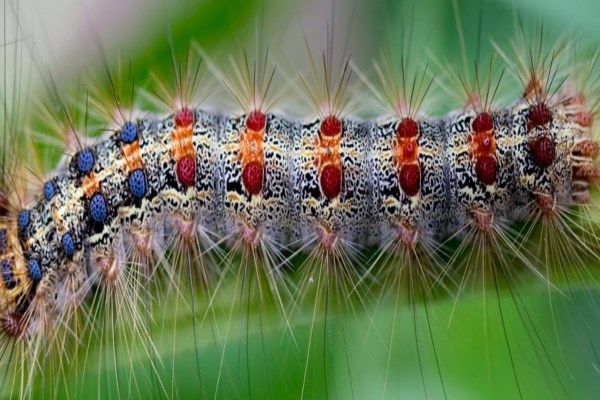Homeowners Management Guide to Gypsy Moths

The Township of Adjala-Tosorontio does not have a gypsy moth spraying program. Here are some helpful tips and information on how you can tackle them. Further resources are available from the Province of Ontario here.
The European Gypsy Moth is a major forest pest concern because the caterpillar, or larva stage of the insect, eats the leaves of trees, defoliating them which makes them more susceptible to disease and damage from other insects, like tent caterpillars. Continued defoliation of trees can lead to their decline and eventual death.
A single gypsy moth caterpillar can eat an average of one square metre of leaves.
Populations of this species are cyclical with population surges approximately every 7-10 years. When populations rapidly rise, they are historically followed by a crash. This population crash is due to mortality from a host specific virus or fungus.
An outbreak was observed in parts of Simcoe County in 2019 and particularly severe and widespread defoliation was evident in 2020. The most noticeable impacts have been seen in Tiny, Penetanguishene, Midland, Tay and Adjala-Tosorontio with smaller impacts in many other areas within the county.
What can you do to stop the spread on your property?
The Ontario Ministry of Natural Resources and Forestry (MNRF) has competed mapping showing areas with European Gypsy Moth defoliation in 2020. The MNRF mapping illustrates a general outbreak across many areas of the province. 2020 mapping is available here: MNRF 2020 European Gypsy Moth Defoliation Map
For further information, please visit:
Landowners Management Guide to European Gypsy Moth
Ministry of Natural Resources and Forestry - European Gypsy Moth
To contact a Certified Arborist or Professional Forster, please visit:
International Society of Arboriculture
Ontario Professional Foresters Association
Resources for Landowners












